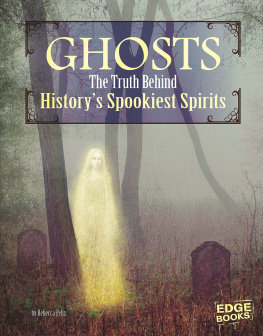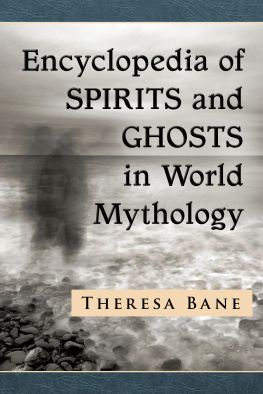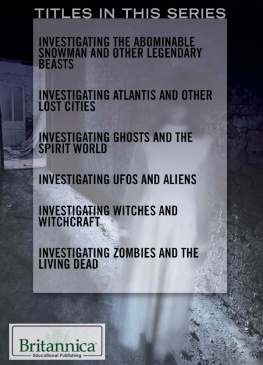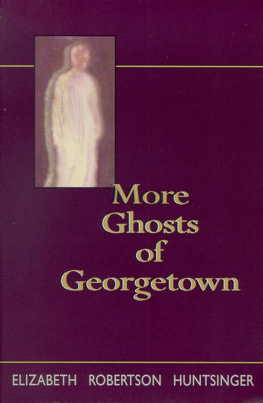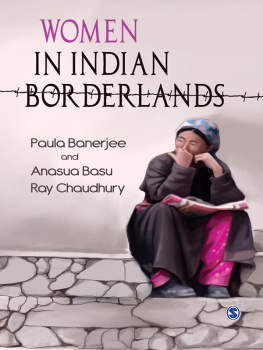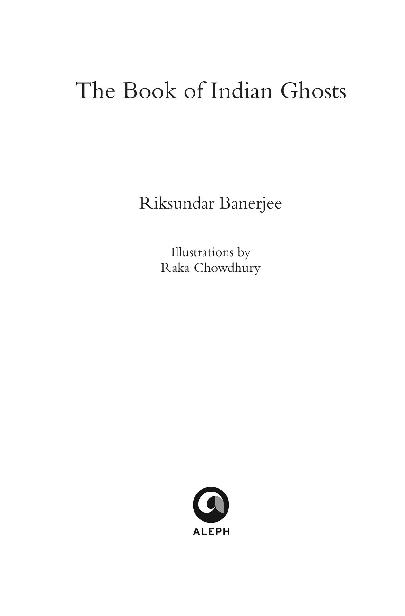The Book of Indian Ghosts
The munchowa, a ghost found in Kanpur
ALEPH BOOK COMPANY
An independent publishing firm
promoted by Rupa Publications India
First published in India in 2021
by Aleph Book Company
7/16 Ansari Road, Daryaganj
New Delhi 110 002
Copyright Riksundar Banerjee 2021
Illustrations copyright Raka Chowdhury 2021
The author has asserted his moral rights.
All rights reserved.
The views and opinions expressed in this book are those of the author and the facts are as reported by him, which have been verified to the extent possible, and the publisher is not in any way liable for the same.
No part of this publication may be reproduced, transmitted, or stored in a retrieval system, in any form or by any means, without permission in writing from Aleph Book Company.
ISBN: 978-93-90652-26-6
1 3 5 7 9 10 8 6 4 2
This book is sold subject to the condition that it shall not, by way of trade or otherwise, be lent, resold, hired out, or otherwise circulated without the publishers prior consent in any form of binding or cover other than that in which it is published.
CONTENTS
INTRODUCTION
There are more things in Heaven and Earth, Horatio, than are dreamt of in your Philosophy.
William Shakespeare, Hamlet.
In the history of time, one lifespan disappears like a pebble in the sea. What happens after we die? Do we leave this existence forever? For millennia, the fear of the unknown has inspired a deep fascination about the afterlife among humans. This fascination is usually tinged with dread, although, the idea of an eternity spent wallowing in misery doesnt make much sense. Be that as it may, this fear of the unknowable eternity that awaits us after we leave our earthly shells is what has given rise to the concept of ghosts.
Fear is a powerful emotion. It is born out of our psychological interpretations of day-to-day experiences. Upon analysis, the source of almost all our fears can be traced to that of the unknown. Whenever we come across a phenomenon which cannot be explained by our existing knowledge and experiences, we feel overwhelmed with fear. Religious beliefs provide an optimistic overview of an afterlife in some form of heaven or hell depending on our mortal deeds. Yet, every concept that has been advanced from time immemorial is hypothetical, leaving room for imagination to spread its wings. Thus, stories of ghosts, which surround our mortal existence, become a way of confronting the unknown.
Do ghosts exist? Around the world, there are endless studies and discussions on this subject. Simply put, ghosts are lifeless beings that inspire fear. Sometimes they are the spirit of someone who was once alive. Other times, they simply fall beyond the physical rules of the universe. These uncanny beings have found mention in primeval epics like the Ramayana or Mahabharata; Tanakh , the Hebrew Bible; The Egyptian Book of the Dead ; the Iliad ; and the Odyssey , among others.
Ghost lore has been part of the popular imagination. Around the fifth century BCE , a physical projection of ghosts was staged in the classical Greek drama Oresteia by Aeschylus. During the European Renaissance, a book called Of Ghostes and Spirites, Walking by Night by Ludwig Lavater was said to have been reprinted several times. The mythical One Thousand and One Nights also includes tales of supernatural beings.
Later, around 1173 AD , the Dracula called Count Estruch became very popular and terrifying. According to Catalan mythology, Count Estruch died fighting against witchcraft. The practice of witchcraft was prevalent in medieval Britain. Agnes, also known as the Wise Wife of Keith, was said to be one of the witches who terrorized East Lothian of Scotland during the North Berwick Witch Trials, 1590
Elsewhere in Europe, the concept of the vampire, that still creates a sensation among writers and filmmakers, was first introduced in Hungary. The German spirit poltergeist, which creates a racket and moves objects with loud noise, found its place in many modern cinematic representations. The banshee, an Irish spirit, was said to have made its ghastly appearance just before deaths in families. A widespread myth of the monster called the goblin could be found all across Europe, during the Middle Ages. This mischievous creature had a small, hairy body with a greed for gold, and sometimes possessed magical abilities as well.
Another very popular concept of ghosts called the zombie, first originated in Haitian folklore. Zombies are supposed to be magically resurrected human corpses which have an insatiable appetite for fresh flesh.
When it comes to Indian mythical ghosts, these are to be found in ancient Indian sacred texts like the Rigveda, where a classification of ghosts can be found. More of these mythical creatures found in Indian history are described here in this book.
Literature, movies, drama, paintings, etc., have always played significant roles in representing social structures. Remarkably, in all of these genres, ghosts or spiritual beings have marked their presence in some way. Naturally, their characteristics are influenced by the geographic, cultural, and temporal spaces in which they are brought to life, so to say. Yet, there are strange similarities between all these ghosts regardless of which part of the world they belong to.
The definition of class has evolved over time. During the medieval period, this classification was based on the occupational role assigned to an individual in society. As a result, ancient tales often placed supernatural beings within the folds of the prevalent social hierarchy in a sort of mirror image, or perhaps ghost image. This is why, there is a definitive hierarchy in the supernatural world with monsters, demons, pretas, rakshasas or spirits, taking their places alongside humans and gods. A detailed exploration of this aspect of the spirit world is beyond the scope of this book but it is definitely something worth mentioning.
Over time, humans realized that the dead would always outnumber the living. The void created by the absence of someone is impossible to fill. But the discomfort and ambiguity that follow death emerge in the tales of the deceased who return among us as ghosts. There are numerous possible reasons why these otherworldly figures enter the imagination of the living. For example, someone who had been oppressed in their lifetime might come back to seek justice. Throughout history, there have been brutal injustices perpetrated on those belonging to the marginalized sections of the society. This may have led to the emergence of legends about notorious spirits such as the masan or kanipishachi that notably set about seeking justice for their oppressed class. Significantly, the dayani of North India seeks to avenge the brutality meted out to lower-caste, dark-skinned women. The oppression and pain of women throughout centuries have engendered one of the largest corpuses of ghost stories. It explains why there are so many female ghosts in both literature and film. Throughout history, in all cultures, women have been deprived, tortured, and victimized. Other than the patriarchy, social barriers have also heavily affected women. In Indian culture, there was a time (until the eighteenth century) when a man could have a large number of wives. The chief role of these wives was to keep giving birth until their bodies eventually gave up. Naturally, there are innumerable stories that can be found of ghosts that have risen from the death of pregnant women, or women who died while giving birth, or women who were sexually abused, and so on. Whether it is the sankhchunni or the chirogunithese blood-curdling ghosts seek revenge on behalf of women who were terrorized when they were alive. The legends surrounding the ghosts of unmarried women, such as the petni or the kichin, strike fear since they can also seek horrific sexual gratification from the living. Sexual desires have often driven ghosts into finding a way back to the mortal world. Even some male ghosts like the supurus have a reputation for attempting to have sex. Female spirits are not the only sort of ghosts who seek vengeance. In fact, the majority of unquiet phantoms are those who are seeking vengeance on those who oppressed or murdered them when they were living.



